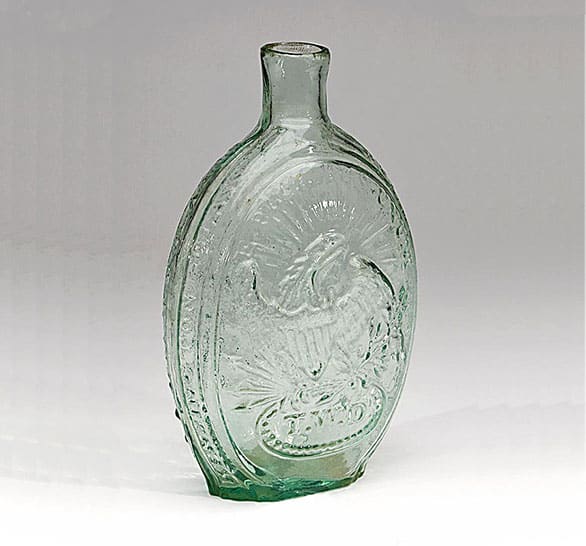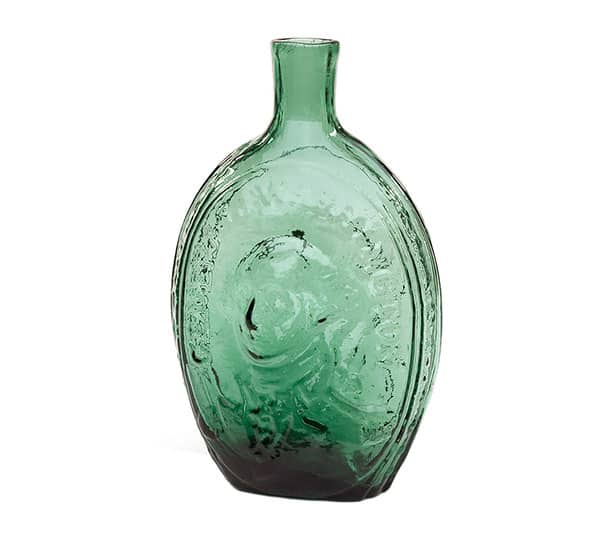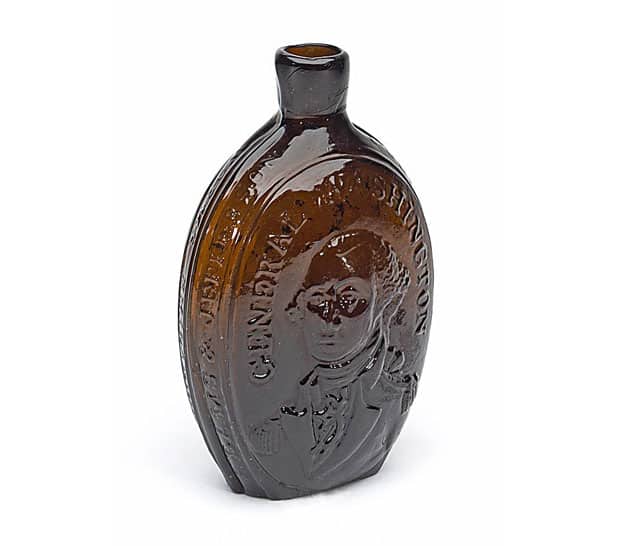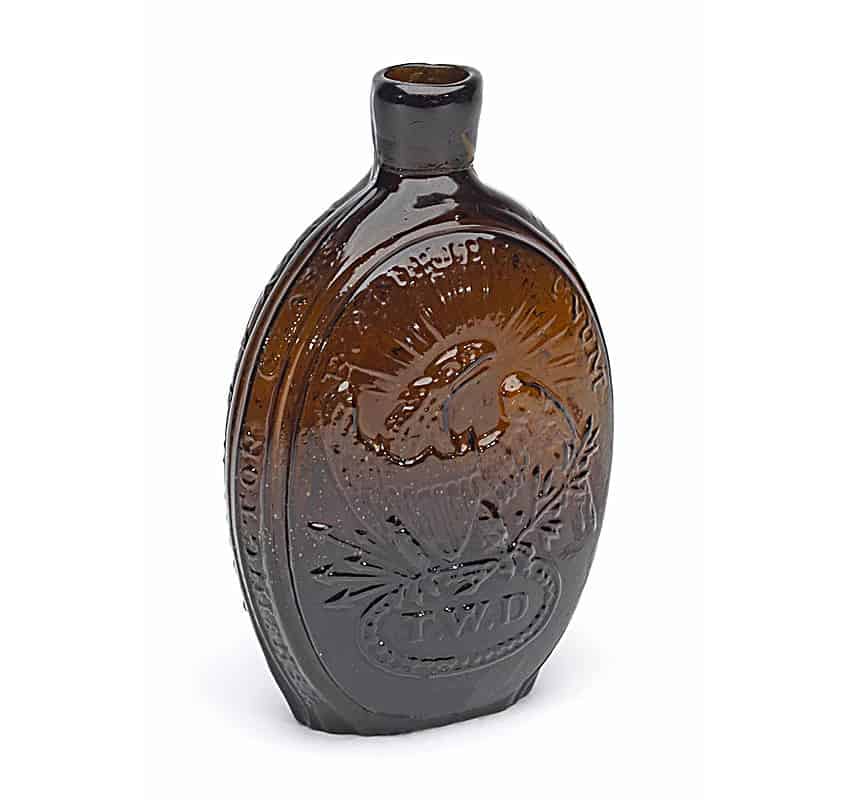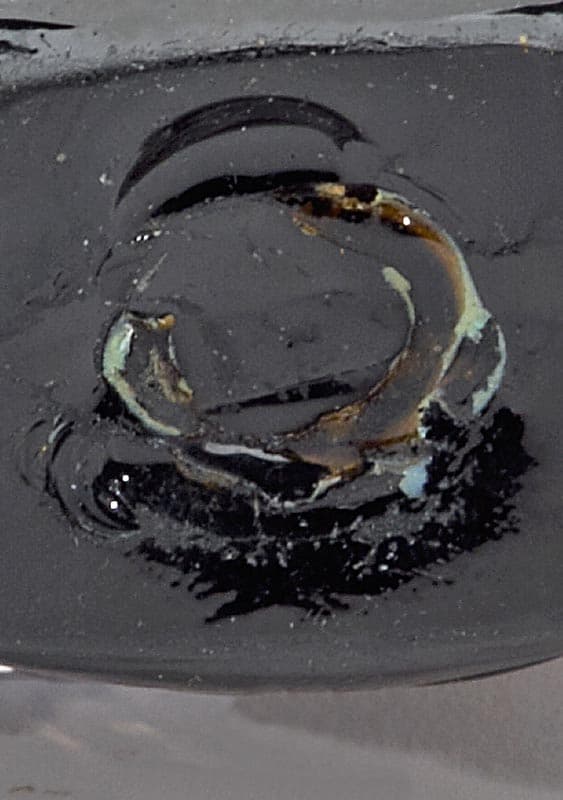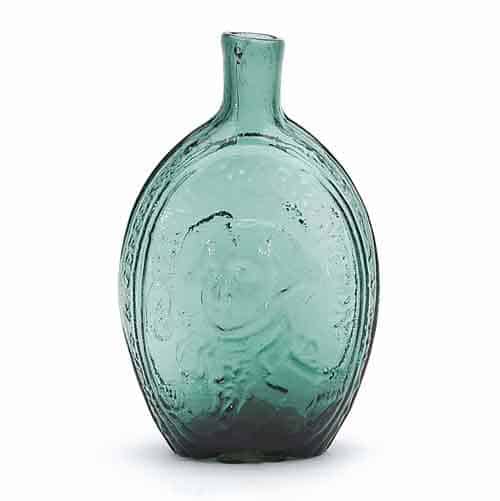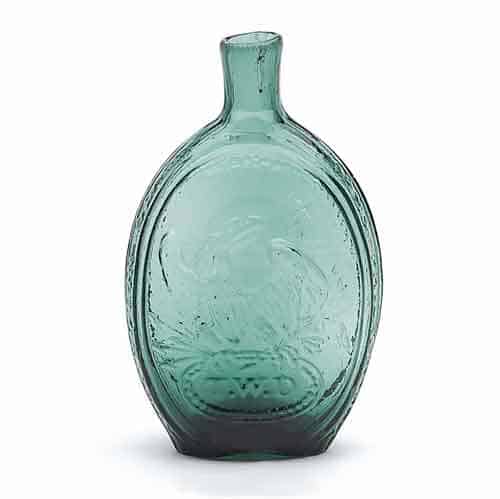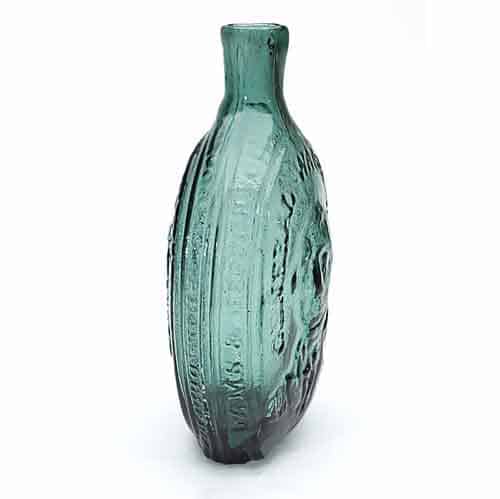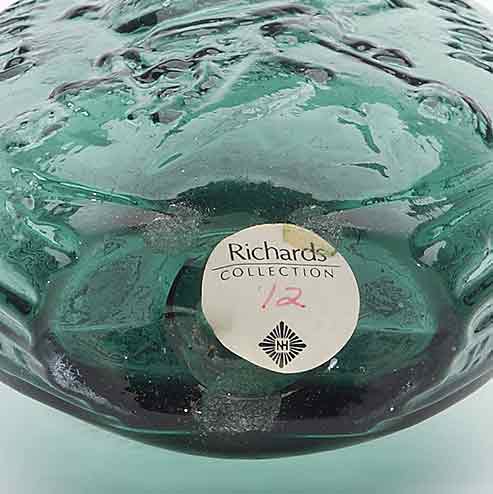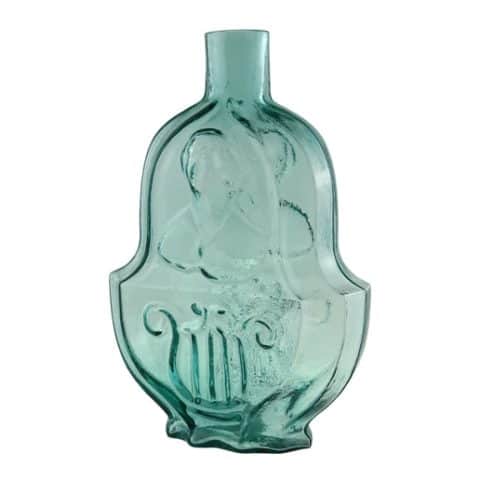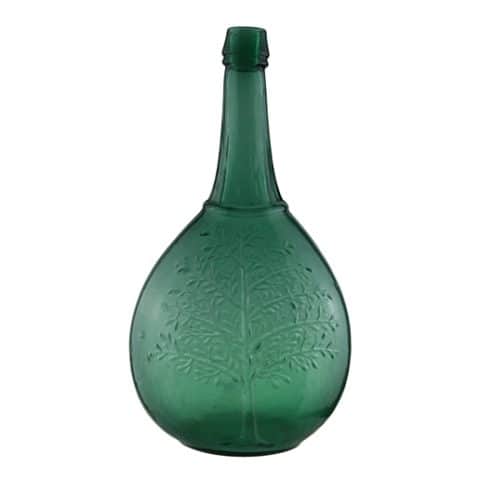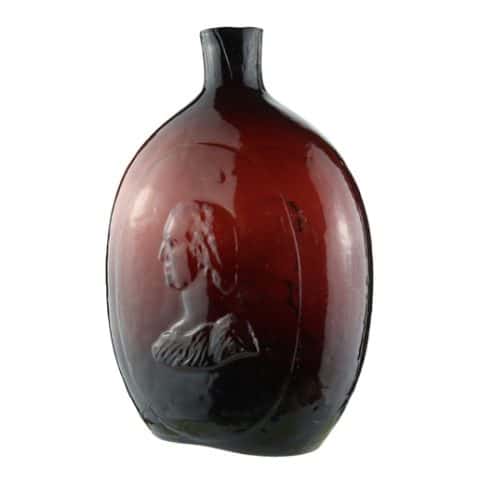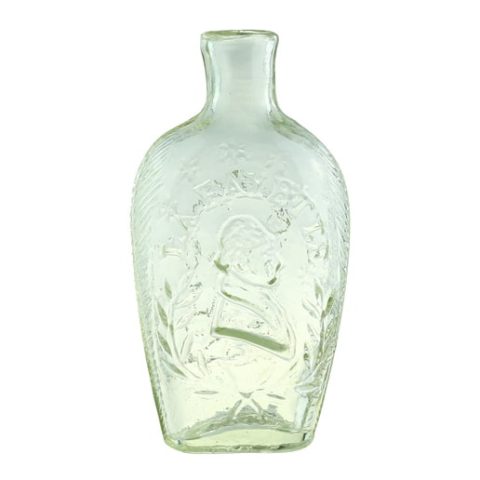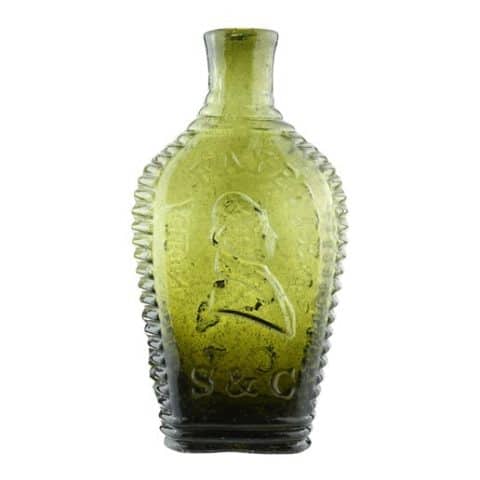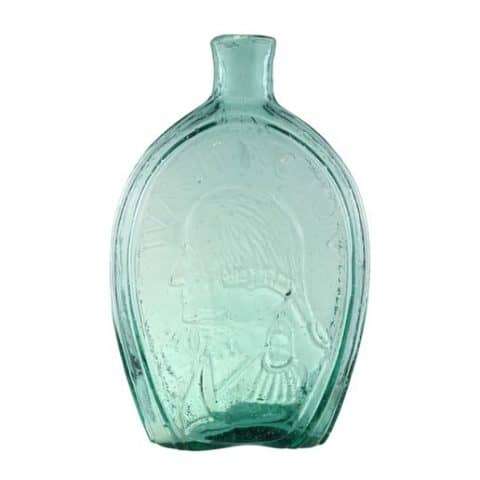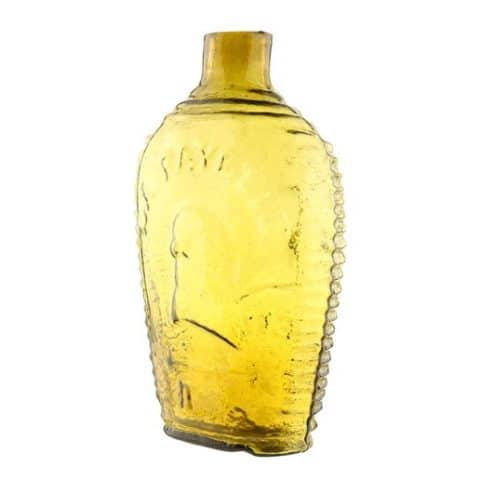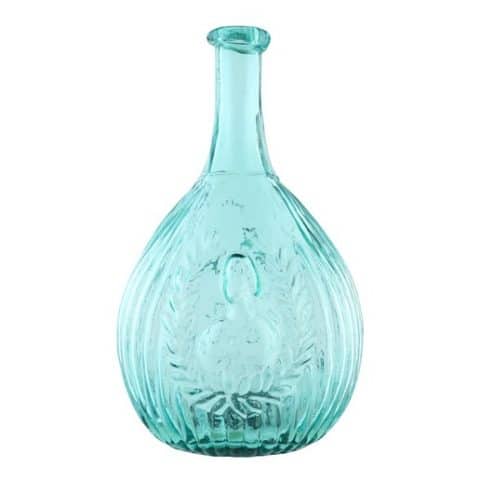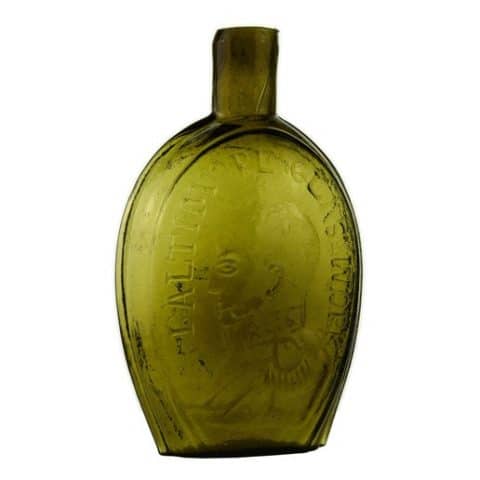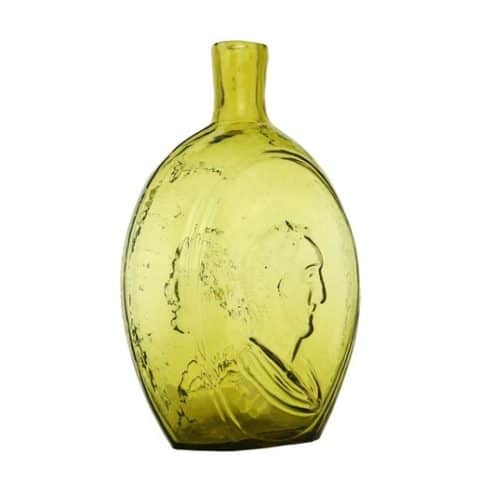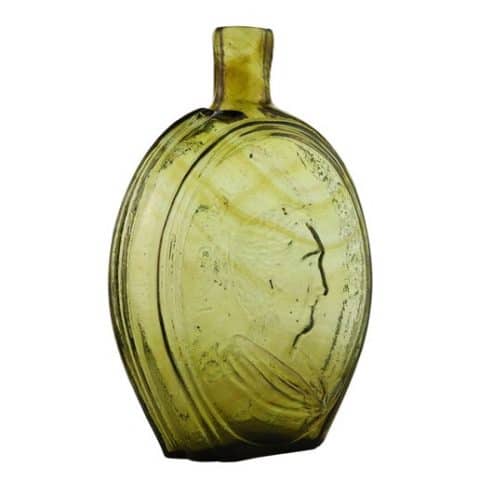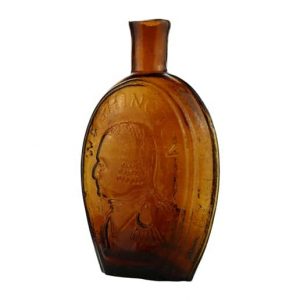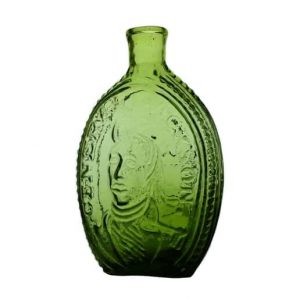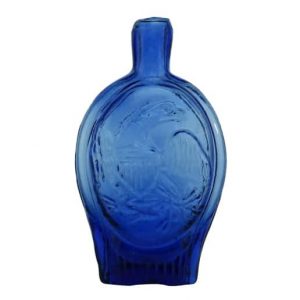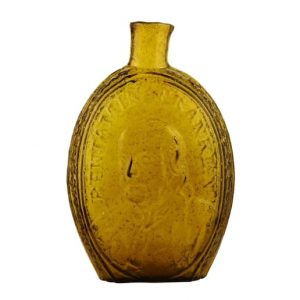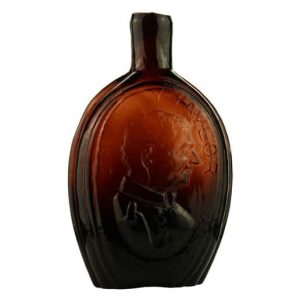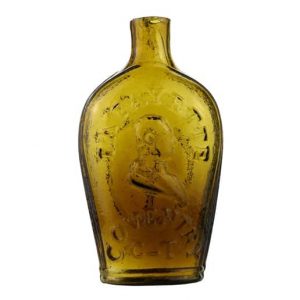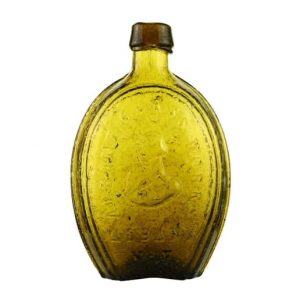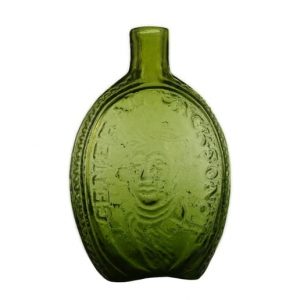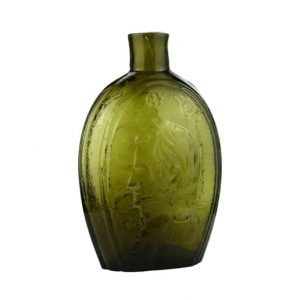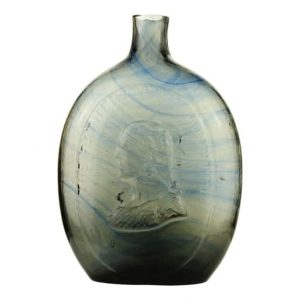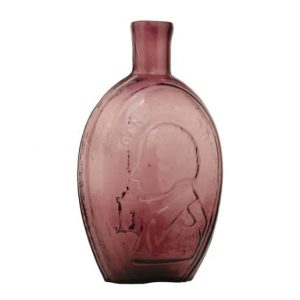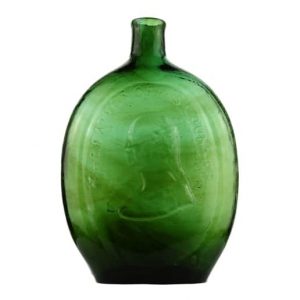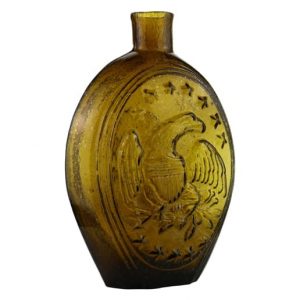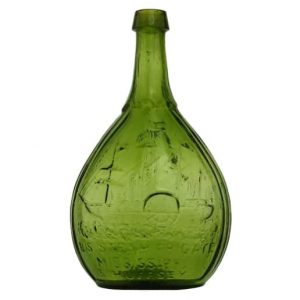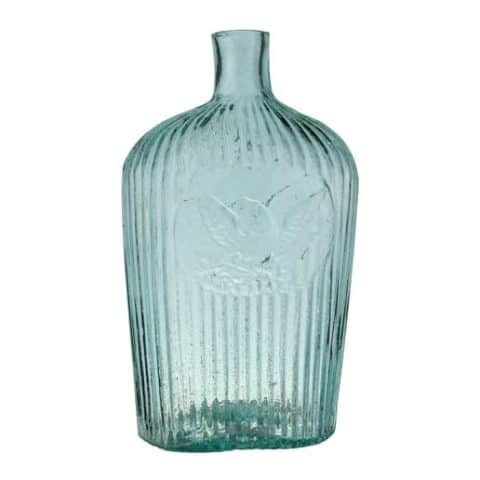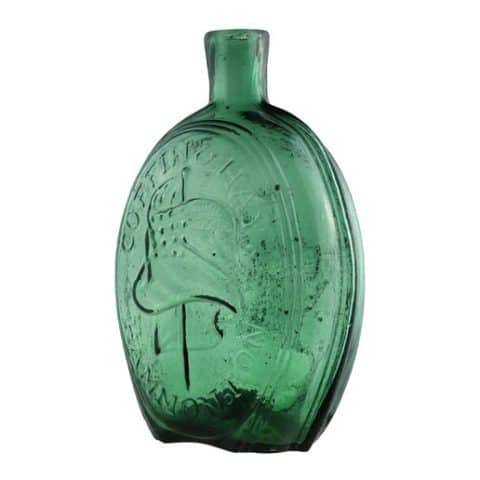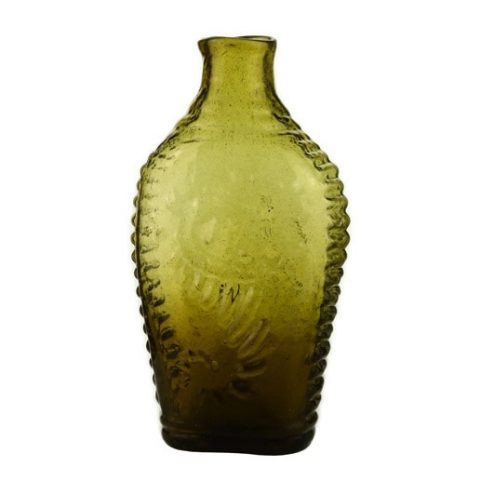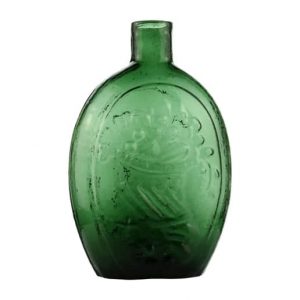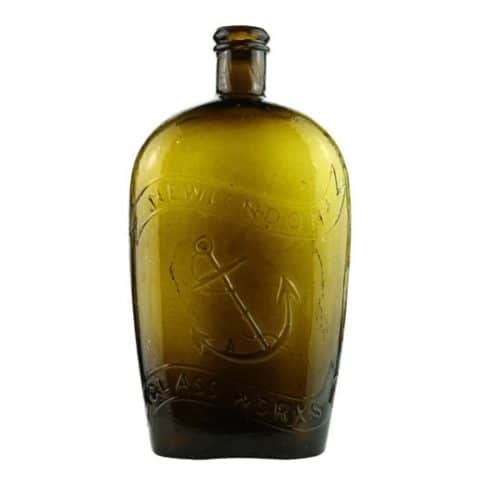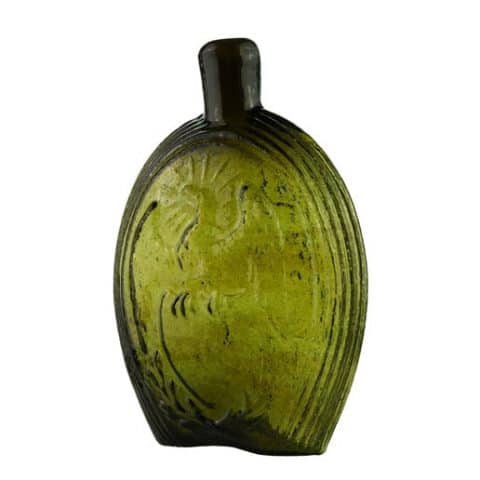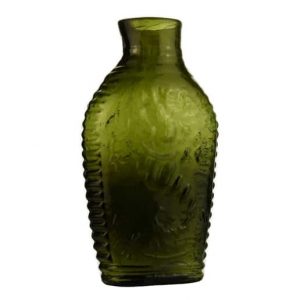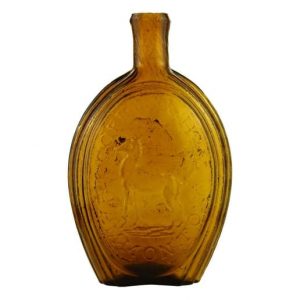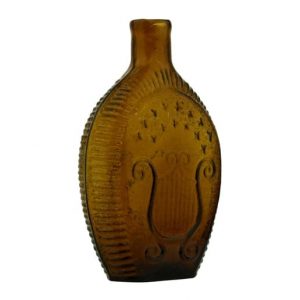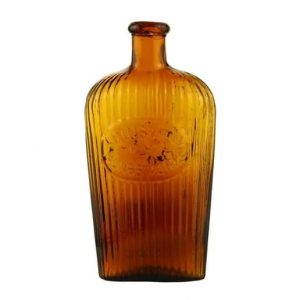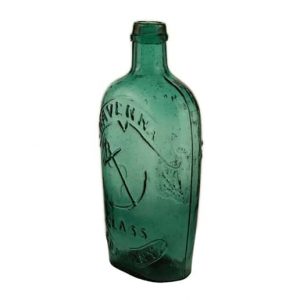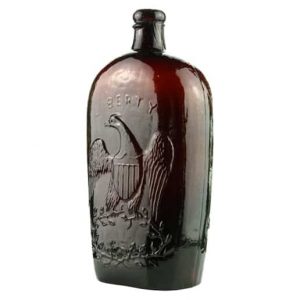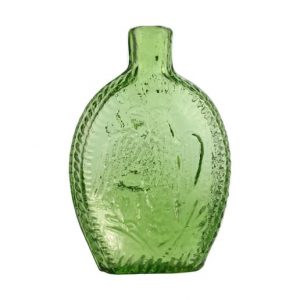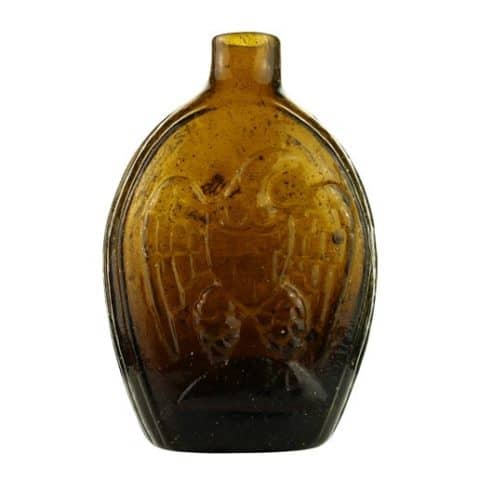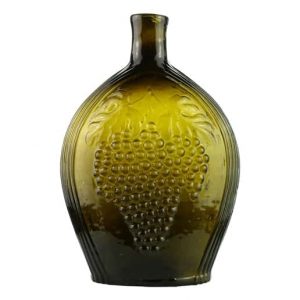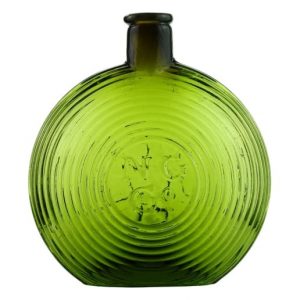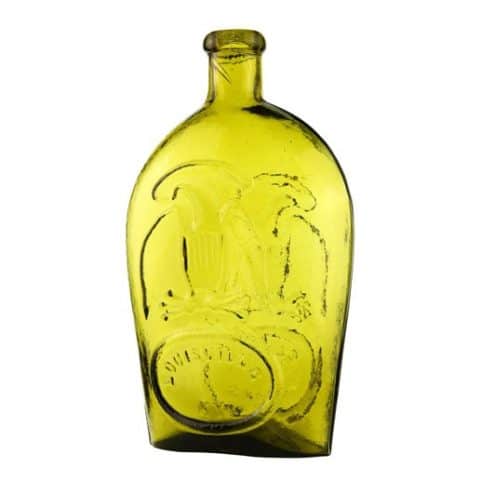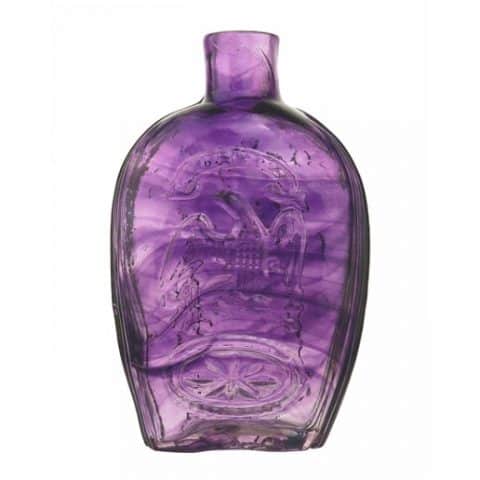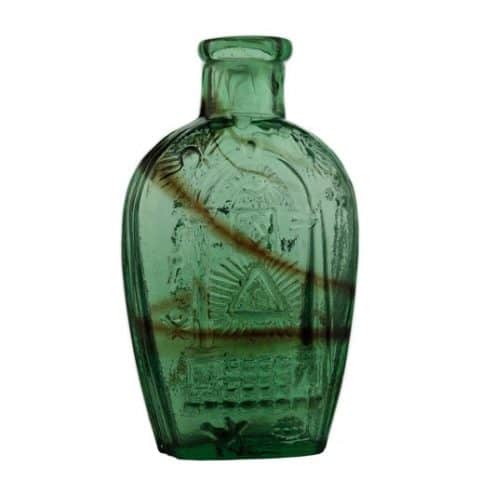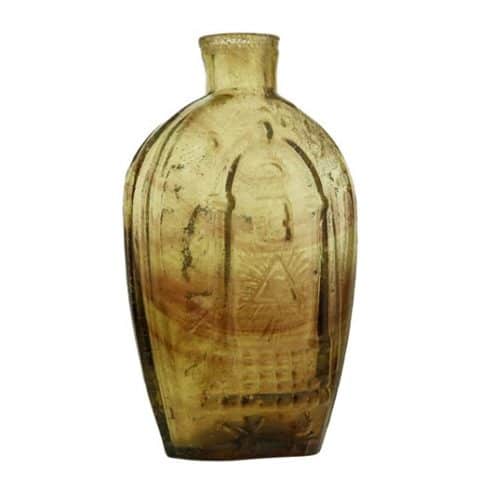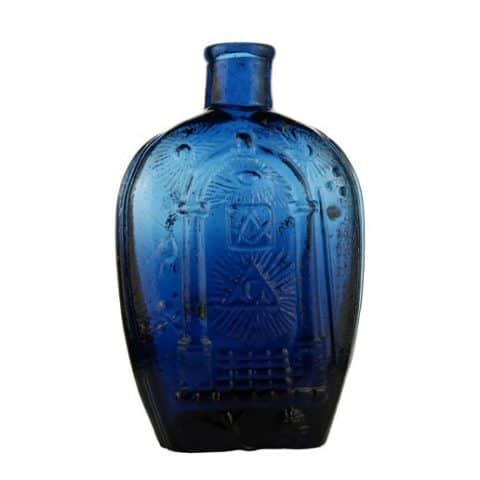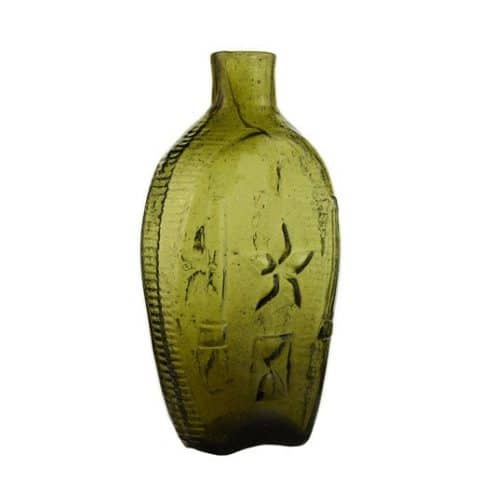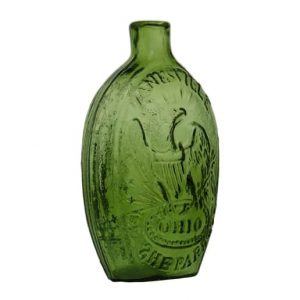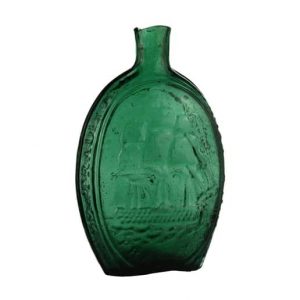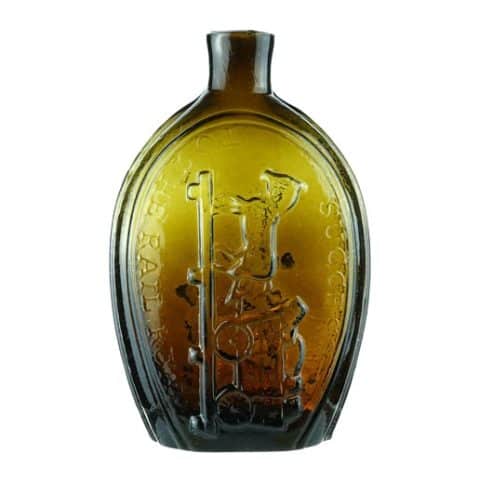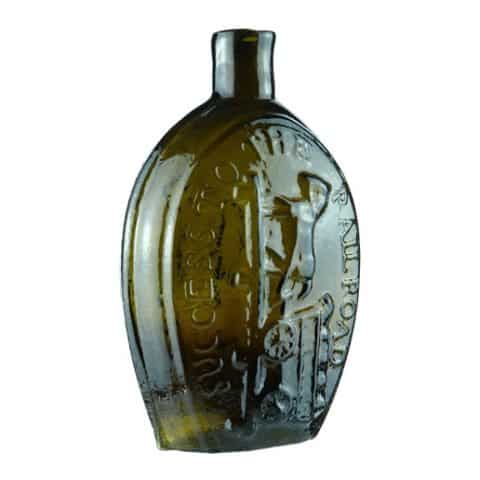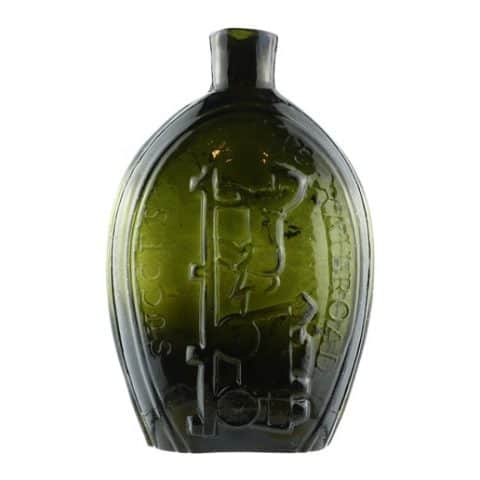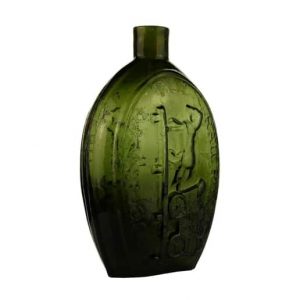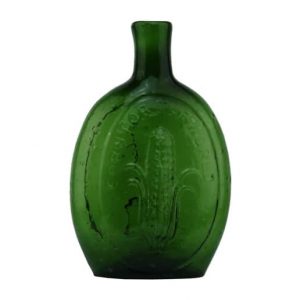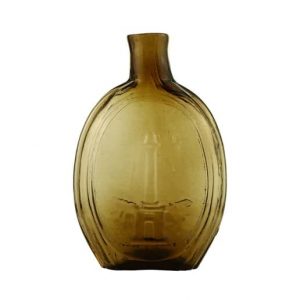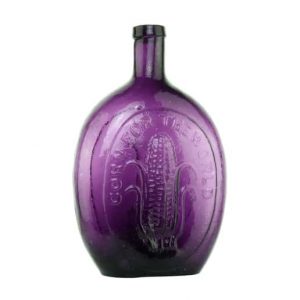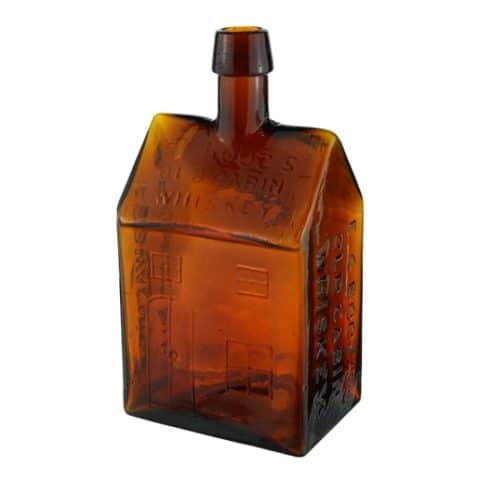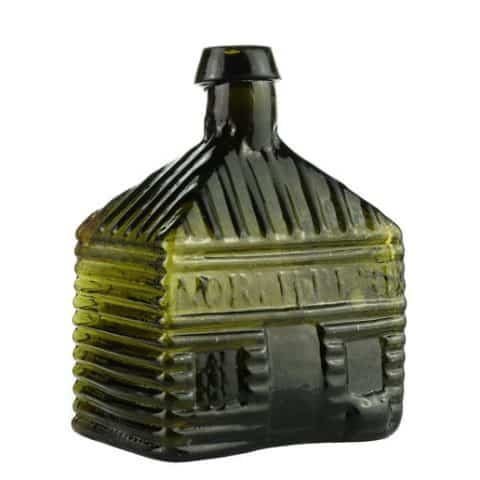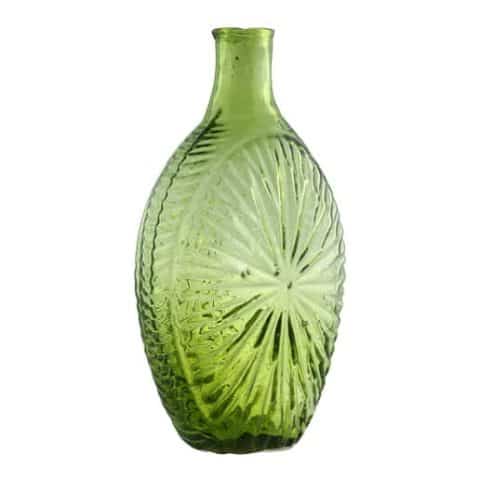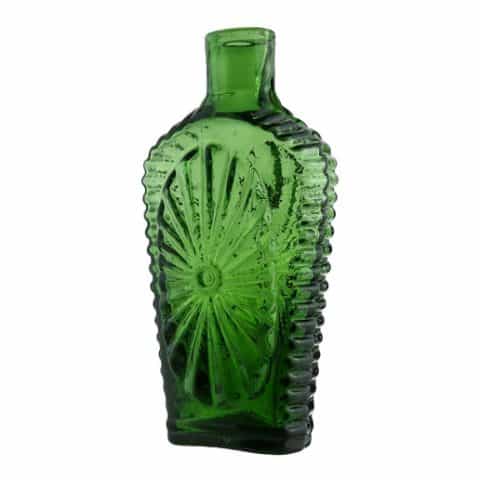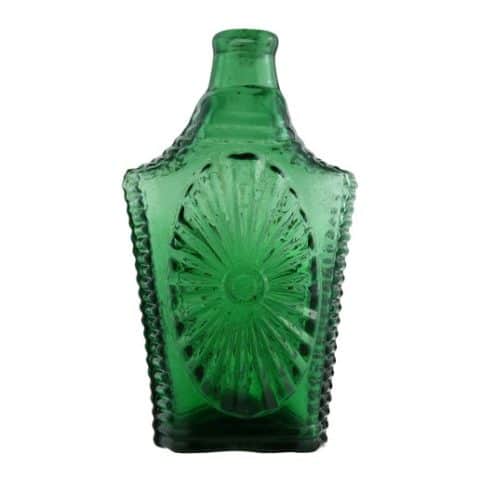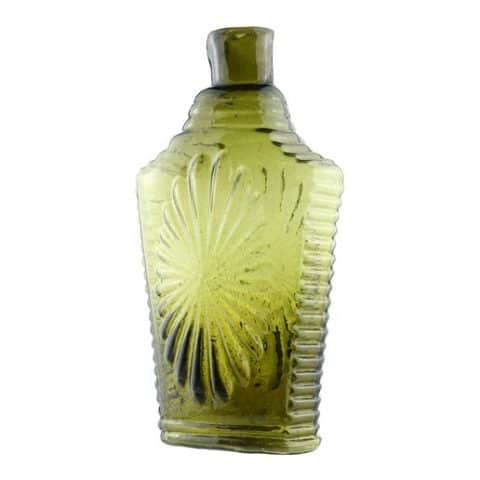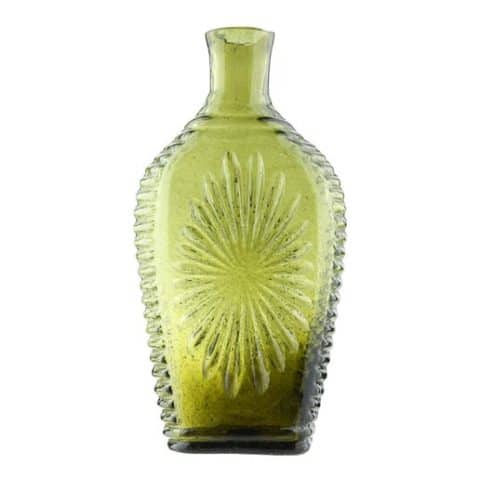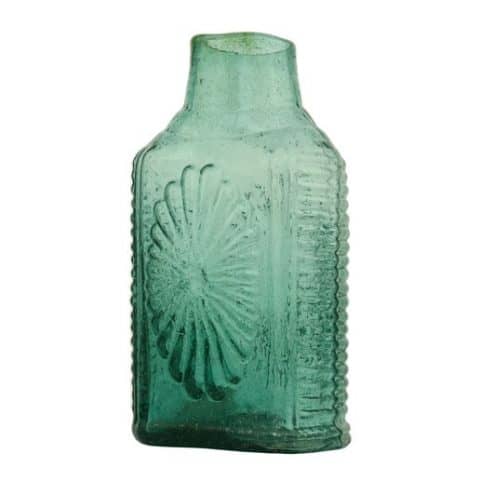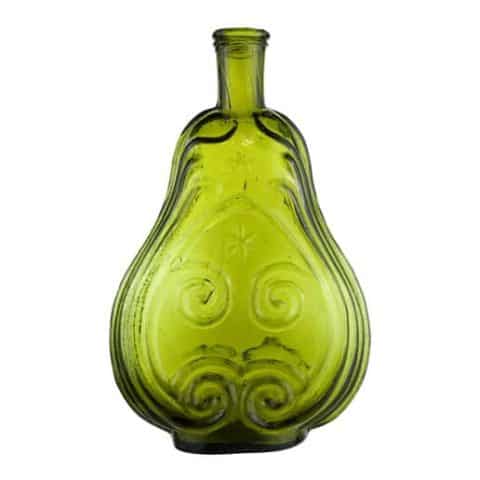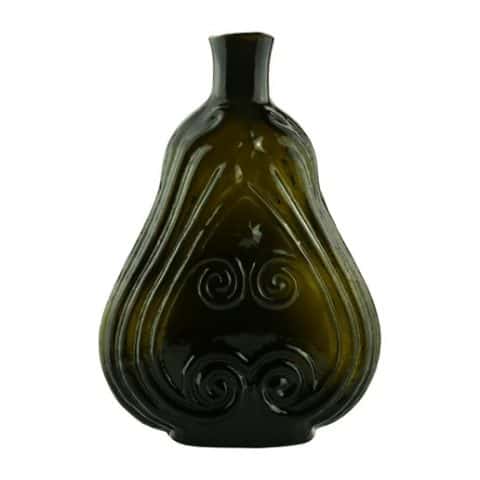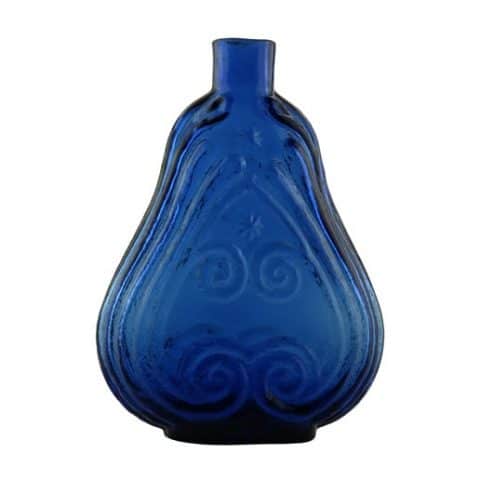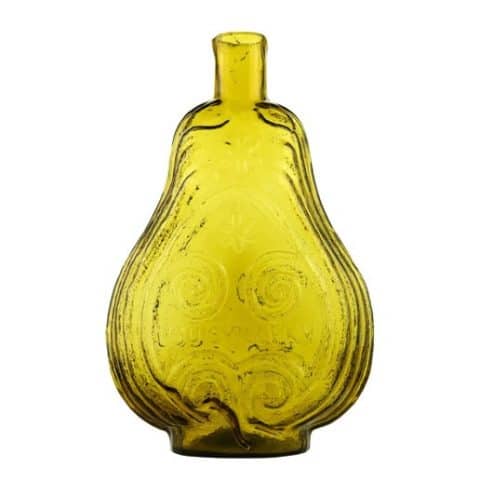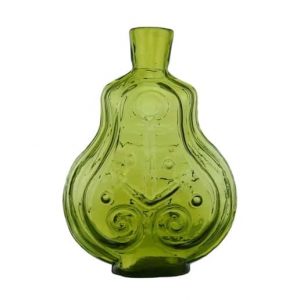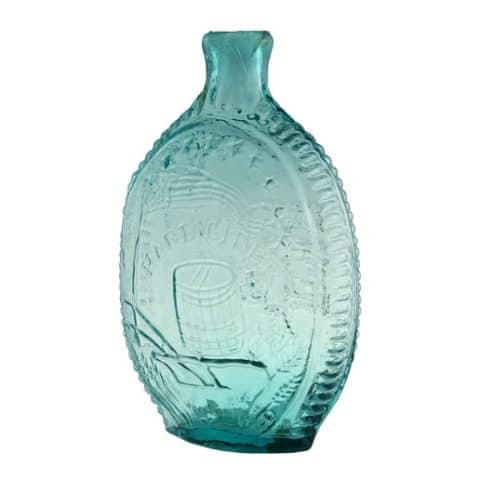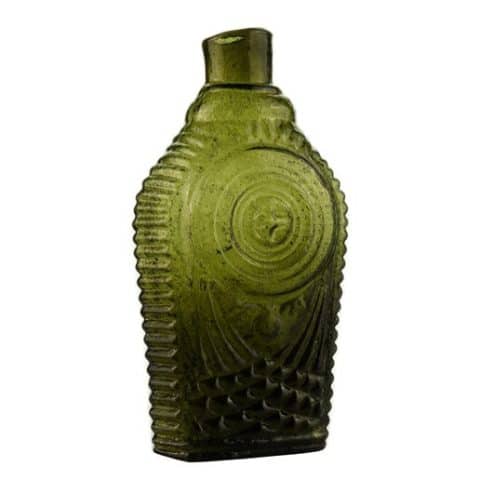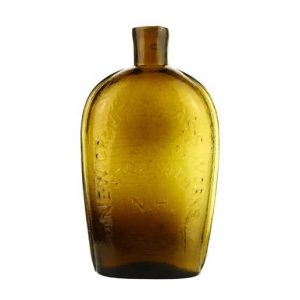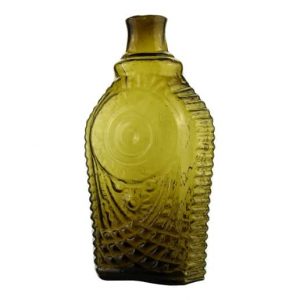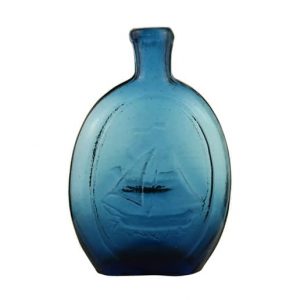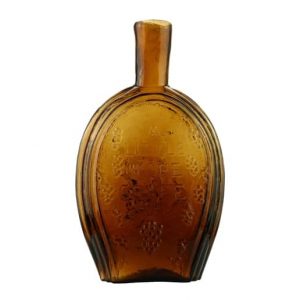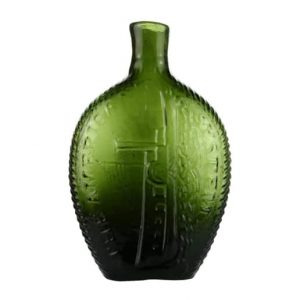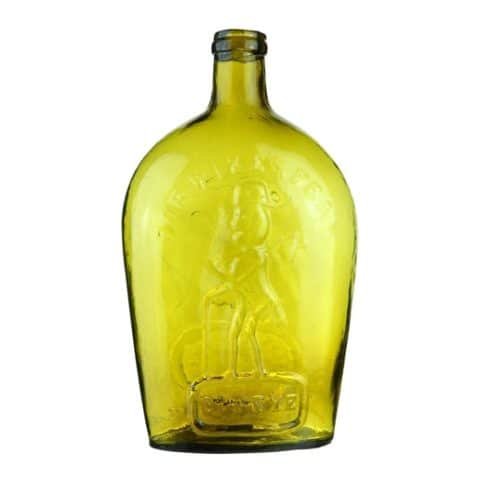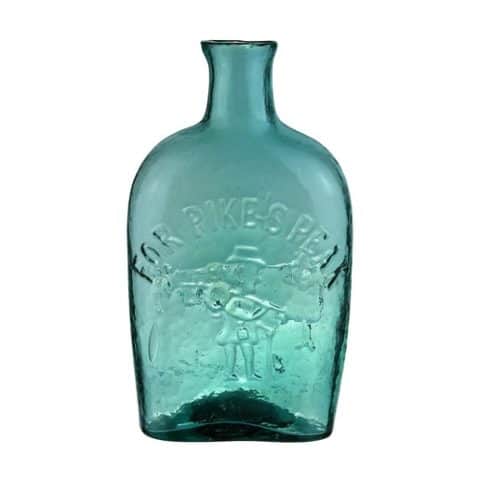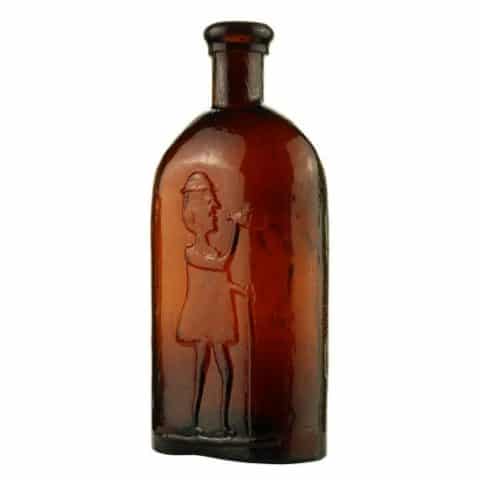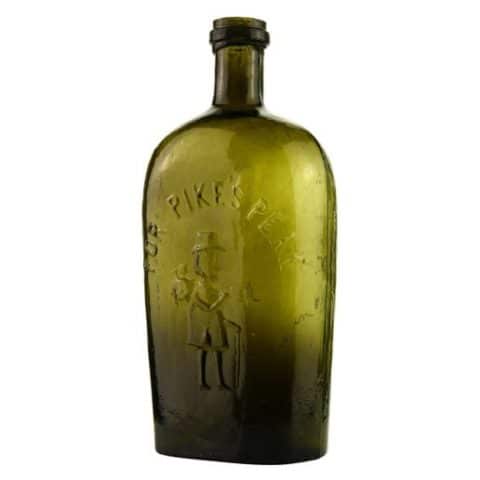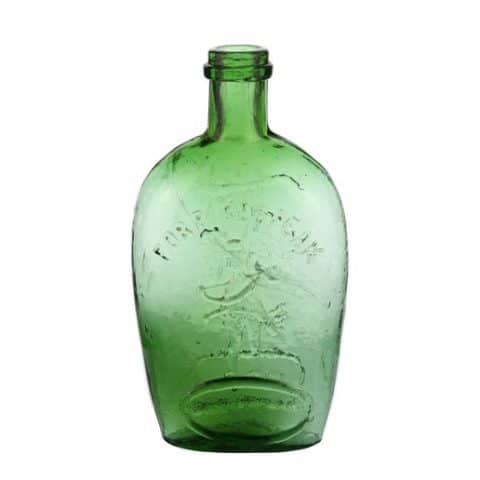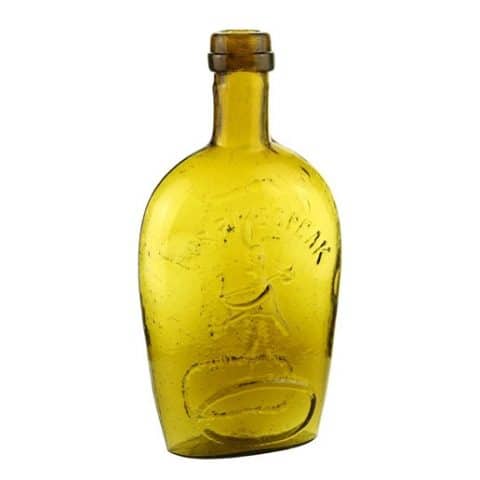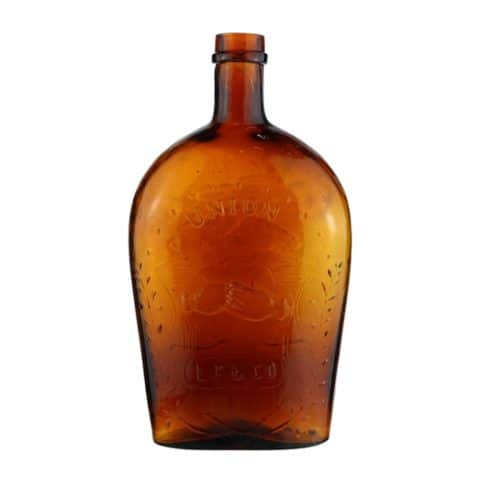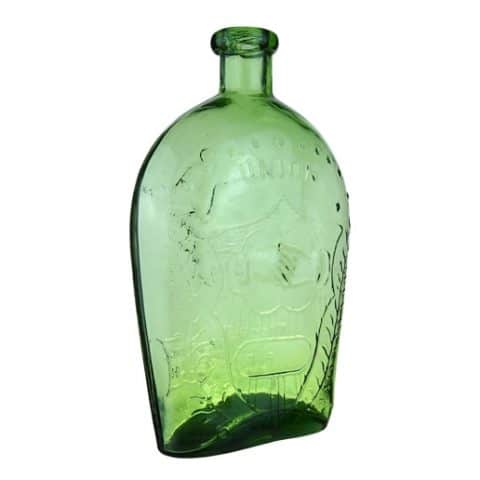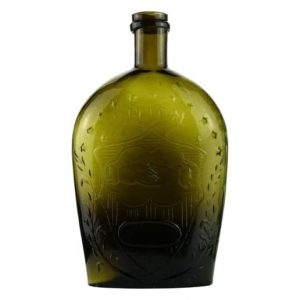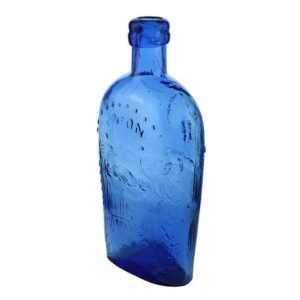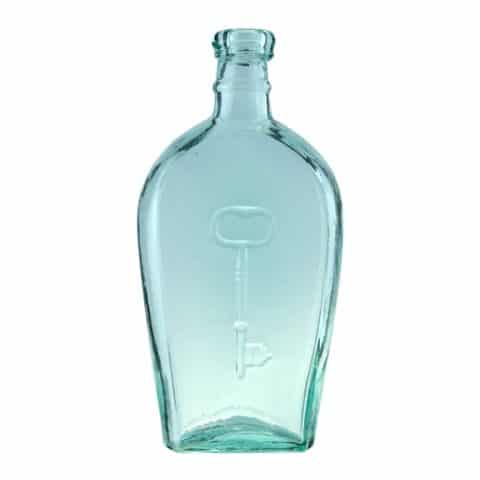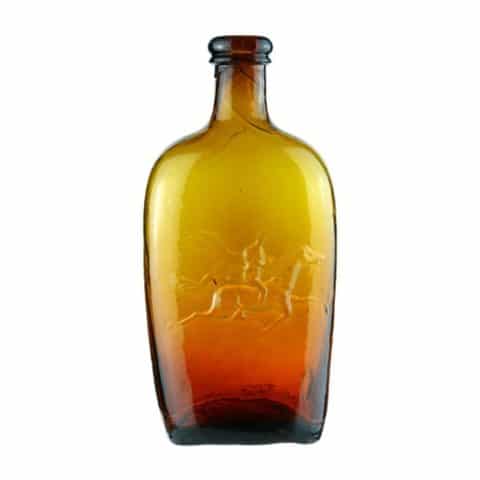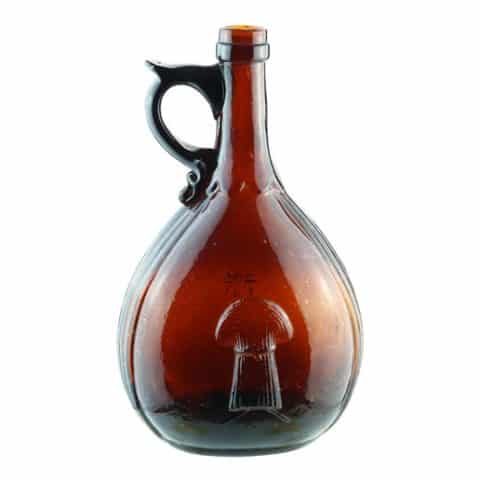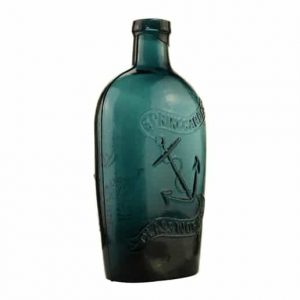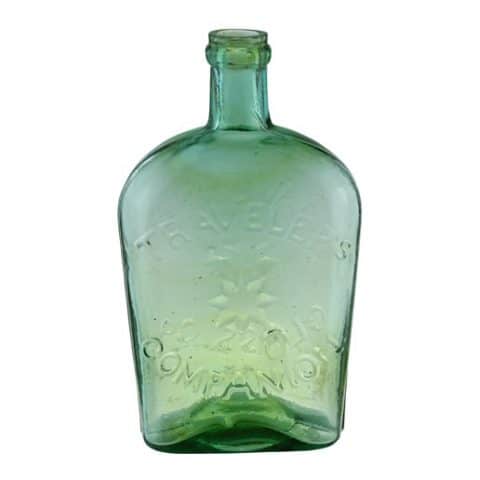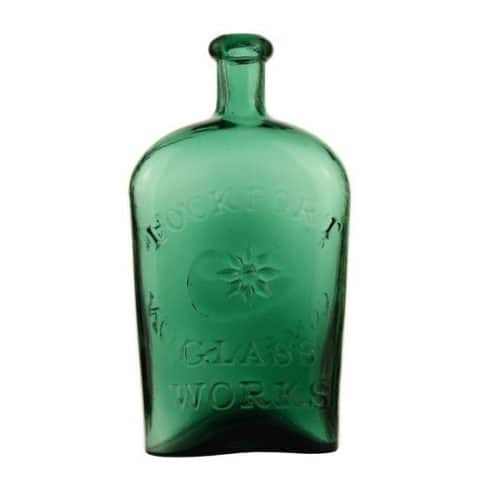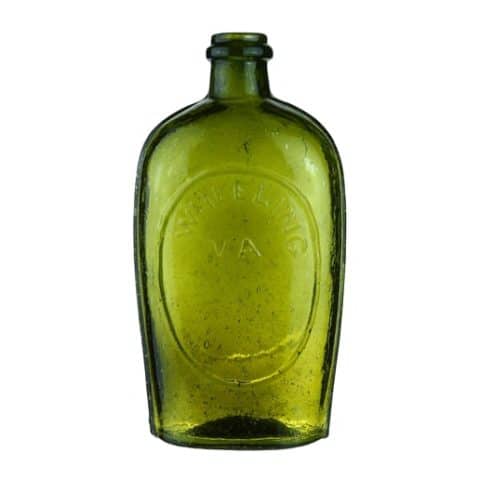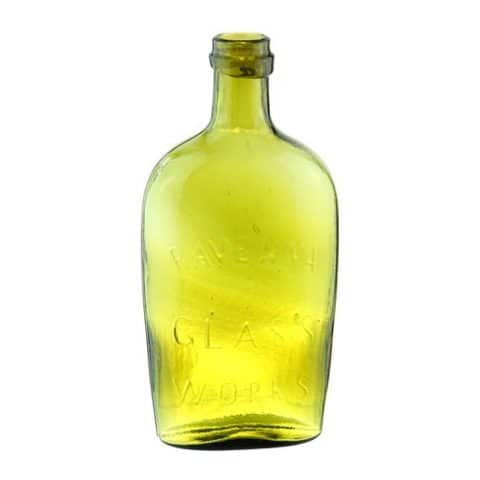GI-14 “General Washington” – Eagle Portrait Flask Amber
GI – 14
“General Washington” And Bust “E Pluribus Unum, T.W.D.” Eagle Historical Flask
Firecracker
Kensington Glass Works, Philadelphia, Pa.
Dark Amber Pint
Provenance: Anonymous
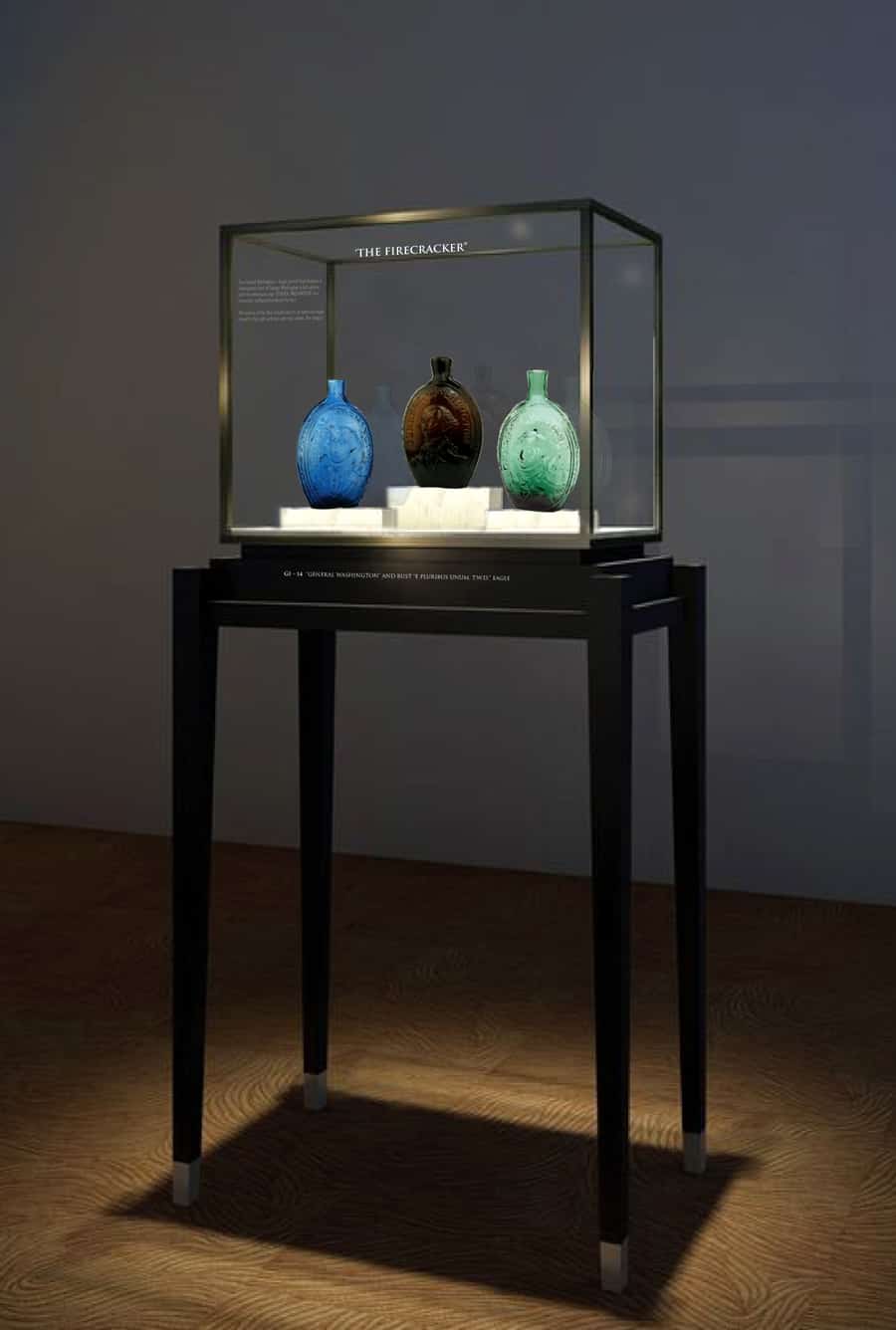
Our dark amber GI-14 General Washington – Eagle pint is historically very significant and is affectionately called the “Firecracker.” The flask was blown at the Kensington Glass Works in Philadelphia, Pennsylvania somewhere between 1820 and 1830. The flask has a plain lip and pontil mark on the bottom.
See the museum example of a GI – 14 “Firecracker” in Cobalt Blue
The General Washington – Eagle portrait flask features a three-quarter bust of George Washington in full uniform with the embossed copy ‘GENERAL WASHINGTON’ in a horseshoe configuration above the bust.
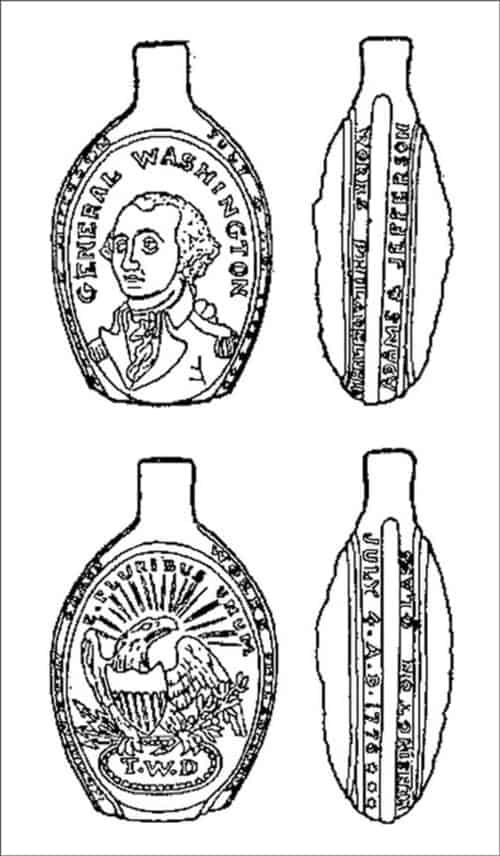
The reverse of the flask proudly depicts an American eagle turned to the right with rays and stars above. The wings are slightly raised with the left foreshortened to give the illusion of a more three-dimensional figure. The breast shield has seven bars. The left talon has five arrows or thunderbolts and the right talon is holding a large olive branch. The head is adorned with sunrays with ‘E PLURIBUS UNUM’ embossed in a semi-circle above the sunrays. The eagle is perched on an embossed oval frame with 28 small inner pearls. In the oval is the embossed initials ‘T. W. D.’ which stands for Thomas W. Dyott.
What makes this flask one of if not the most important historical flask is that it is embossed along the sides ‘ADAMS & JEFFERSON JULY 4. A.D. 1776’ on the edge nearest Washington and ‘KENSINGTON GLASSWORKS PHILADELPHIA 1776’ with three small stars after 1776 on the edge nearest the American eagle.
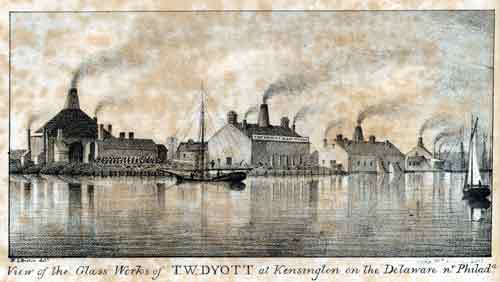
History tells us that both John Adams and Thomas Jefferson died within hours of each other on July 4, 1826. This was 50 years to the day after the signing of the Declaration of Independence. This flask documents and commemorates the event and was brought forward by Thomas W. Dyott who was a British-born American patent-medicine king, glassmaker, temperance advocate, and reformer. He was also the head of Kensington Glass Works.
Known glass colors of the GI-14 flask are aqua and light green which are common and examples are available and are well within the means of the average collector. Clear medium green, clear emerald green, and emerald green are noted as rare. Deep green, blue-green, and deep green with yellow tone examples is considered very rare. Golden-yellow, dark amber, red amber, sapphire, and deep sapphire blue are extremely rare.
There is a grey example with a bluish cast that is probably the rarest color of all but not the most desirable color. The most desirable and most difficult to obtain colors would be amber followed by sapphire blue (some say cobalt blue). Both examples are represented in the museum.
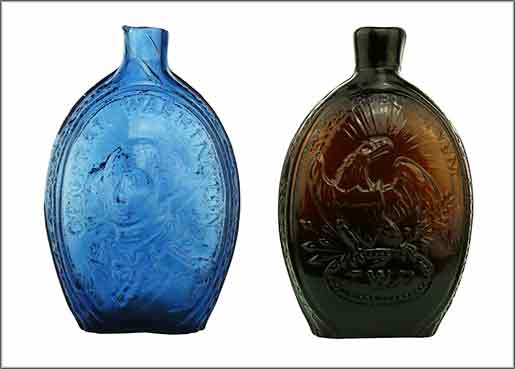
Primary Image: GI-14 General Washington – Eagle dark amber pint imaged on location by the FOHBC Virtual Museum midwest studio led by Alan DeMaison.
Support: Reference to Early Washingtons Part II, From rare to common, these classy flasks march ahead of most others by Mark Vuono, Antique Bottle & Glass Collector, May 2013
Support: Reference to American Bottles and Flasks and Their Ancestry by Helen McKearin and Kenneth M. Wilson, Crown Publishers Inc., New York, 1978.
Support Images: Auction Lot 56: “General Washington” And Bust – “E Pluribus Unum / T.W.D.” And Eagle Portrait Flask, Kensington Glass Works, Philadelphia Pennsylvania, 1820-1830. Medium amber with a strong olive tone, sheared mouth – pontil scar, pint; (light exterior high point wear). GI-14. Strong mold impression, Extremely rare in this color. One of two or three known examples. Fine condition. A historically significant flask which was created to commemorate the deaths of founding fathers John Adams and Thomas Jefferson. Coincidentally the former presidents, and close friends, both died on July 4th, 1826, the 50th anniversary of the adoption of the Declaration of Independence. Dr. Gary and Arlette Johnson collection. – Norman Heckler, Norman C. Heckler Auctions, Auction #167
Support Images: Auction Lot 29: “General Washington” And Bust – T. W. D And Eagle Portrait Flask, Kensington Glass Works, Philadelphia, Pennsylvania, 1820-1840. Medium bluish-green, sheared mouth – tubular pontil scar, pint; (slightly weakened impression in the upper shoulder area). GI-14 Beautiful color. The opulent firecracker flask. Fine condition. Ex Paul Richards collection #12. – Norman Heckler, Norman C. Heckler Auctions
Support Images: Light green glass; blown-molded; plain lip, pontil mark. Obverse: three-quarter view of Washington in uniform facing left. Reverse: American Eagle, head turned to right; shield with seven bars on breast, wings partly raised and right foreshortened. Thunderbolt (five arrows) in its right talons, large olive branch in left. Sun rays above eagle’s head. Eagle stands on oval frame with inner band of twenty-eight small pearls. Inscription: “GENERAL WASHINGTON” in semi-circle above bust. Reverse: “E. PLURIBUS UNUM.” in semi-circle above sun rays. In oval frame “T.W.D.”. Edges: vertically ribbed and with inscription “ADAMS & JEFFERSON JULY 4, A.D. 1776” and “KENSINGTON GLASSWORKS PHILADELPHIA”. Three small stars after 1776. – Corning Museum of Glass
Support Image: A new world record for the highest-selling bottle at auction was set this morning after Heckler Auctions sold a light blue bottle, dubbed the “Firecracker Flask,” for $100,620. April 2, 2010.
Support Image: View of the Glass Works of T. W. Dyott at Kensington on the Delaware River, near Philadelphia. This lithograph of 1831 depicts the glass works owned by T.W. Dyott at Kensington on the Delaware River near Philadelphia. Ships are visible on the river, and smoke is rising from the chimneys of these early industrial buildings. The print was published in James Mease and Thomas Porter’s Picture of Philadelphia from 1811 to 1831: Giving an Account of its Origin, Increase and Improvements in Arts, Sciences, Manufactures, Commerce and Revenue (Philadelphia, 1831). The illustration is by William L. Breton, a watercolorist and early lithographer of Philadelphia scenes, who was active in the city between about 1825 and 1855.
Join the FOHBC: The Virtual Museum is a project of the Federation of Historical Bottle Collectors (FOHBC). To become a member.


